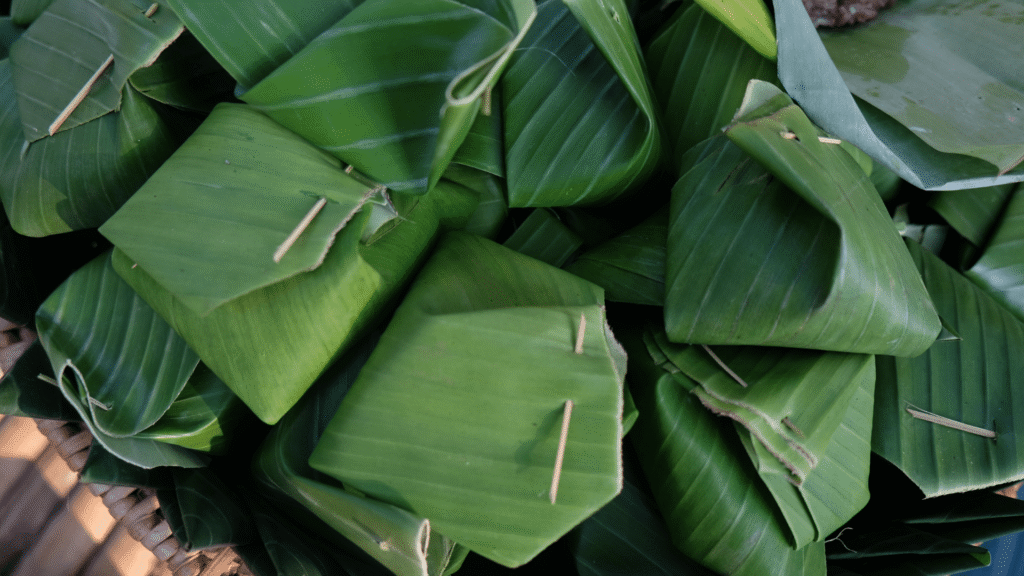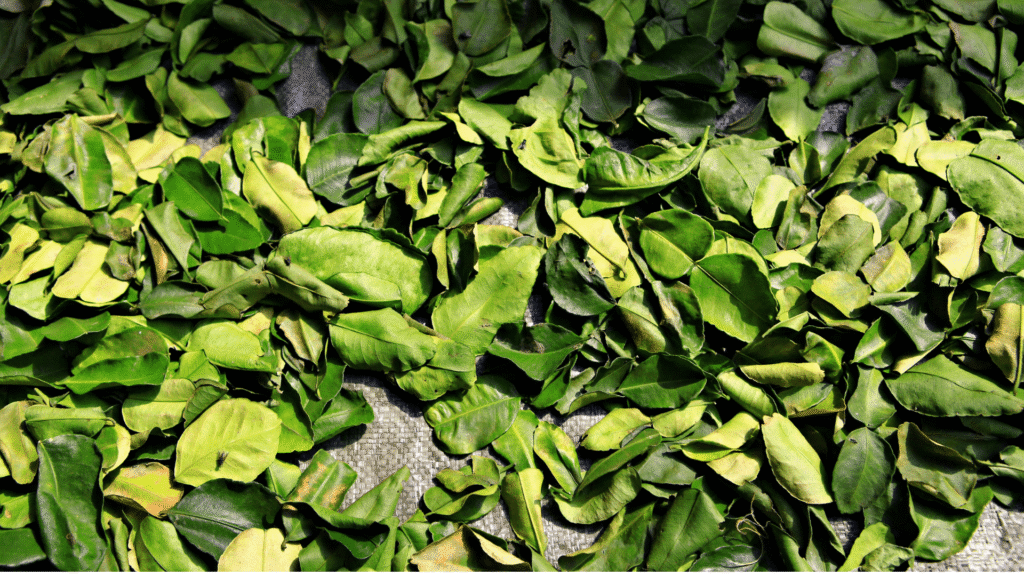Amidst the rapid advancement of technology and modernization in Japan, people still maintain traditional values, especially in the culinary world. One of the natural ingredients that is popular among traditional and modern grocery enthusiasts is fresh banana leaves. Although there are no banana trees in Japan from the local population, banana leaves have their own place in many aspects of life, especially in the art of culinary life.
- Natural Wrapping for Traditional Food
Banana leaves are widely used as food wrapping, replacing plastic or aluminum foil. It’s not just about aesthetics, but also about taste and aroma. Banana leaves impart a distinctive aroma that enhances the taste of food, especially when used for steaming or grilling.
Some Japanese restaurants have started using banana leaves to wrap mochi, onigiri, or even bento, to give an exotic and natural feel that attracts both domestic and foreign customers. - Aesthetic Elements in Food Presentation
In Japanese culture, the art of food presentation (washoku) is highly valued. Fresh banana leaves are used as a base or complement to dishes in high-end restaurants. The bright green color of banana leaves provides a natural contrast that enhances the appearance of food, especially when served at formal events such as kaiseki ryori (a traditional Japanese multi-tiered meal). - Eco-Friendly Alternative
With the increasing awareness of environmental issues, the use of natural materials such as banana leaves is becoming a sustainable solution. Many cafes and street food vendors in Japan have started adopting banana leaves as food serving containers, replacing single-use plastic. - Function in Ceremonies and Festivals
Although not as well-known in Southeast Asian cultures, banana leaves are sometimes used in the context of ceremonies in Japan that carry a tropical theme or in international cultural festivals. For example, during matsuri that showcase the culture of other countries, banana leaves are used to display the uniqueness of Southeast Asian dishes. - Culinary Experiment Material
Creative Japanese chefs continue to explore new ingredients. Banana leaves are used in Japanese-Southeast Asian fusion food creations, such as banana leaf sushi rolls, or chawanmushi (egg custard) steamed in banana leaves for a different taste and appearance.



